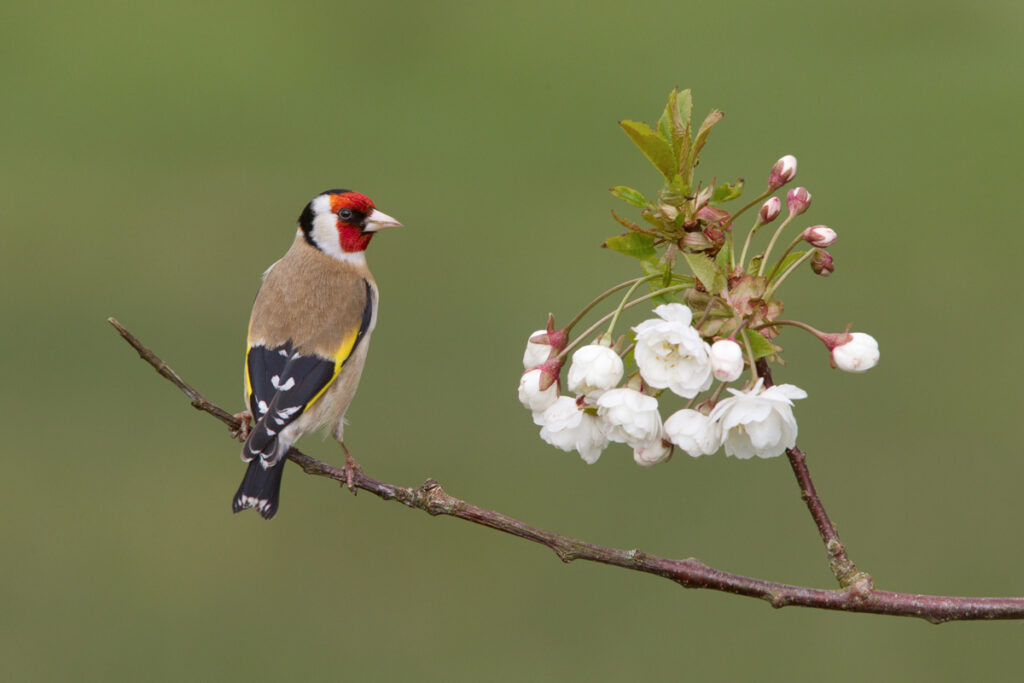UK public embraces garden wildlife during coronavirus lockdown

Gardens and their wildlife have provided lockdown homeowners with a significant opportunity to engage with nature, so say researchers running the weekly BTO Garden BirdWatch, whose 2020 results have been announced today.
BTO’s Garden BirdWatch survey has been running since 1995, with some 12,000 people submitting information from their gardens on a weekly basis throughout the year. However, as lockdown was introduced last spring and trips into the countryside became limited, many more of us took not only a greater interest in our gardens but also a greater interest in the wildlife that they support.
The number of people participating in GBW during 2020 more than doubled, providing BTO scientists with a unique window into gardens across the UK, in what was a unique year. Involvement in the survey has enabled people to engage with their garden wildlife in a meaningful way, contributing to citizen science and improving their own well-being during what has been a particularly challenging time.
Rob Jaques of the BTO GBW team, said “BTO Garden BirdWatch provides well-being and learning benefits to its participants, both of which have been particularly important over the last year. To see the number of people signing up to participate double during lockdown demonstrates the importance of garden wildlife during this difficult period. Active participation in ‘citizen science’ increases engagement with both science and the natural world, leading those who participate to increase their support of wider campaigns and to take positive action to support the natural world. Being able to capture this newfound interest and enthusiasm means we can do even more for garden wildlife.”
2020, probably more than any other year, has shown the importance of gardens for wildlife and for humans, for more information on how to make your garden count for science, please visit www.bto.org/gbw
The key findings from 2020 were:
The mild winter of 2019/20 saw improved overwinter survival of small birds, such as Wren, Long-tailed Tit and Goldcrest, all of which can struggle during periods of hard frosts and prolonged snow cover. Wren and Goldcrest were both up in gardens by 11% on the previous year, while Long-tailed Tit was up 3%.
The mild 2019/20 winter saw fewer migrant finches and thrushes using gardens, with many remaining within the wider countryside or wintering further north and east across Europe. Brambling, Redwing and Fieldfare were all uncommon in gardens during winter 2019/20.
Spring 2020 was exceptionally warm for most of us, resulting in an early emergence of Holly Blue butterflies, something very evident within the weekly Garden BirdWatch observations. Records of the first brood of this delicate little butterfly peaked at 29% of gardens in the week beginning 19th April 2020, compared with the longer term average of 11% for this week (average 2010-2019). The first brood peak was roughly four weeks earlier than the long-term average for gardens.
The 2020 breeding season was poor for many core garden bird species, with Blue Tit and Great Tit showing reduced breeding success and an associated fall in garden reporting through the summer and early autumn.
The dry early summer also impacted on those birds that rely on soil invertebrates to feed themselves and their young, this important food source being locked away under baked hard earth. Both Song Thrush and Blackbird struggled and their Garden BirdWatch reporting rates fell accordingly.
2020 was a strong year for Sparrowhawk in gardens, underlining the recovery of the species and its recolonization of former haunts. We also saw a continuation in the increase of Ring-necked Parakeets in gardens across southern England. Although adding a splash of exotic colour and noise, this non-native species may bring with it some conservation challenges, since it has been shown to out compete other birds at nesting cavities and displace other species from garden feeding stations. Ring-necked Parakeet was recorded from 7% of participating gardens.




